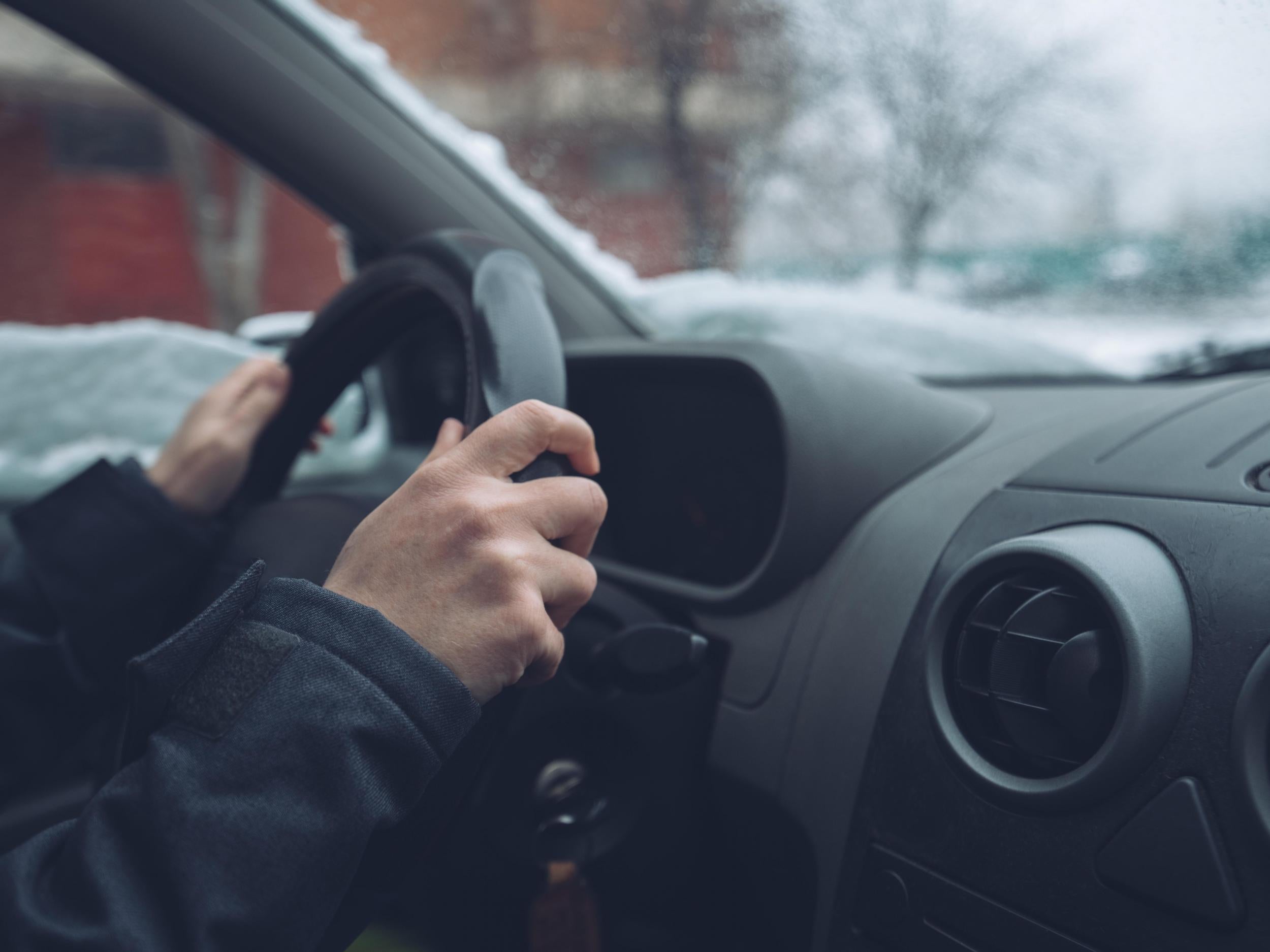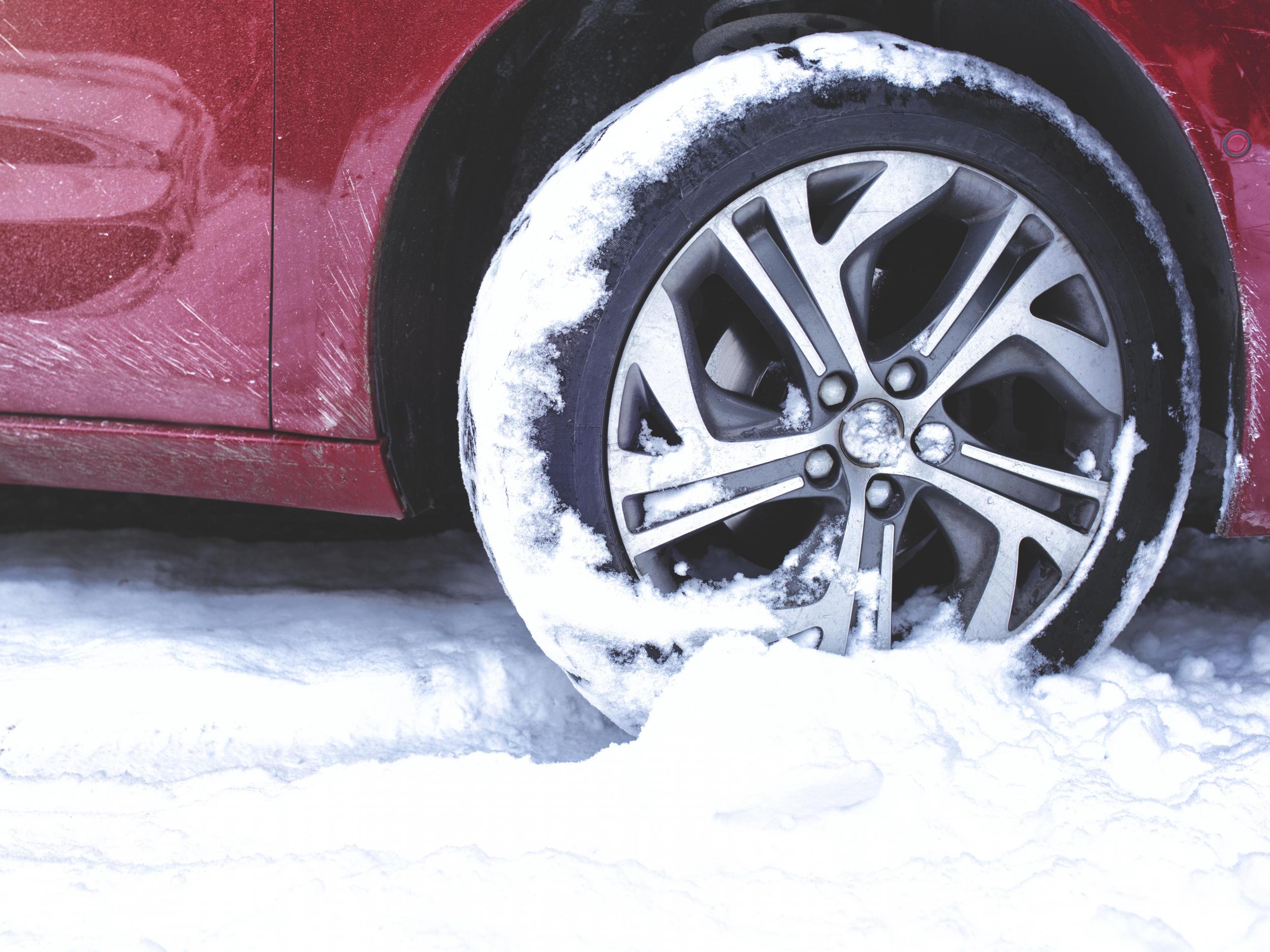Don’t get left out in the cold: How to winterise your car
During unpredictable UK winter weather, you’ll want to make sure your tyres and engine are in good working order and have a deicing method in place

Your support helps us to tell the story
From reproductive rights to climate change to Big Tech, The Independent is on the ground when the story is developing. Whether it's investigating the financials of Elon Musk's pro-Trump PAC or producing our latest documentary, 'The A Word', which shines a light on the American women fighting for reproductive rights, we know how important it is to parse out the facts from the messaging.
At such a critical moment in US history, we need reporters on the ground. Your donation allows us to keep sending journalists to speak to both sides of the story.
The Independent is trusted by Americans across the entire political spectrum. And unlike many other quality news outlets, we choose not to lock Americans out of our reporting and analysis with paywalls. We believe quality journalism should be available to everyone, paid for by those who can afford it.
Your support makes all the difference.Winter is coming and – flood risks aside – the country could also face large swings in temperature and precipitation. In fact, some parts have already seen snowfall. With unpredictable weather, the odds are that people who live in snowy zones will have to deal with ice, sleet, snow or the perfect wintry trifecta. So, unless you live in sunny climes or are car free, it’s a good idea to prepare your vehicle now.
I speak from experience: four decades of navigating both Colorado’s high country passes and Denver streets in pelting sleet. Granted, it might not seem so urgent elsewhere but wherever you live or travel – I’m looking at you, snow-sport enthusiasts – affects what you may need to do to your vehicle and when. Here’s a general plan for winterising your car.
Autumn
Ensure your tyres are properly inflated
Low-tyre pressure affects braking distances and makes a car harder to steer, and the crazy temperature swings we see in the winter can wreak havoc on our tyres. For every 10 degrees the temperature drops, tyres lose one pound of pressure-per-square-inch, according to Tom Williams, vice president of Discount Tire. During a cold snap, your vehicle’s tyre pressure-monitoring system light might start flashing on your dashboard so head to your local tyre store or – if you’re a DIYer – consider buying a portable, electric air-pump from an auto-parts or home-improvement store. Your vehicle’s recommended tyre pressure can usually be found on a placard on the driver’s side door.
Perform the penny test
Tyre tread depth is critical to stopping ability. The easiest way to check it is using the “penny test”, Williams says. Insert an upside-down penny into several grooves of your tyres. If you can see all of HRH’s head, then your tread depth is less than 2/32 of an inch, and your tyres need to be replaced.
Decide if you want winter tyres
Unless you live in a region prone to prolonged periods of ice and snow or plan to drive to such areas, all-season tyres should suit you fine. For those facing months of temperatures below 45 degrees, a second set of winter tyres makes sense. Winter tyres contain thousands of edges for a biting grip, and the rubber remains pliable in cold weather to improve stopping distance and traction, Williams states. They cost £60-£125 per tyre but by swapping them for your “all-weathers” after six months, you extend the life of both sets. Even if you aren’t going to buy snow tyres, it’s wise to replace worn-out tyres in autumn. Newer tyres will have more tread – which equals greater traction – and tyre stores typically hold autumn sales, so you can make a saving.

Look under the bonnet
When the weather turns cold, oils and other engine fluids thicken. That means the battery needs more “oomph” to start an engine, so you’ll want to pop the hood and check the charge. At the same time, inspect belts and hoses for any cracks or breaks – mechanics will often do a free winter car-check, testing the battery and inspecting your car’s fluids, filters, hoses and wipers. Check the label on your windshield wiper-fluid to ensure it is rated for winter, I accidentally left “summer” wiper fluid in my car once, only to have it freeze solid. Now, I am “ready” for winter year-round.
Always have the manual to hand
What’s worse than having to pull off the road during a whiteout because your windshield wipers are covered with snow? Being unable to clean off the wipers. Some higher-end cars “hide” windshield wipers into a well so the car is more aesthetically pleasing. I can tell you from personal experience, though the car may look pretty, it’s awful to have to figure out how to get the wipers up and away from the windshield (into what is called “maintenance mode”) in a snowstorm. It may involve pushing buttons or turning dials in a specific sequence. Grab your owner’s manual in advance and practice how to access your wipers, open the boot and refill wiper fluid well.
Mix your own deicer
This winter tip comes from a TV weatherman in Tennessee; Ken Weathers (yes, that’s his real name) suggests filling a spray bottle with one-third water and two-thirds of 91 per cent isopropyl alcohol to create your own ice-melting solution. The freezing point of rubbing alcohol is so low it breaks up the ice almost instantly and you can keep this spray bottle in your car to use anytime. The diluted alcohol shouldn’t hurt your wipers, just try to keep it off painted areas.
Winter
Start your car’s engine regularly. If you aren’t driving your car regularly, start the engine every few days. If it’s really cold, around or below freezing, start it daily. Today’s vehicles have all sorts of processes running even when the engine is off – a digital clock, security system, Bluetooth. They may not seem like much but together they present a small, constant drain on your car’s battery. Prefer to park it and forget it? Consider a trickle charger, which plugs into an electrical outlet and is connected to your battery to maintain the charge. They usually run between £15-£50 and are easy to use.
Deice more easily
If you wake up to your car covered in ice or snow, let the car do the work for you. Start your car, turn the defrosters on high – wait several minutes – then start to scrape off any ice. This is also the perfect time to use your home-brewed deicer. Don’t turn on your wipers until the ice is melted and use a good plastic scraper. Avoid metal ones as they could scratch the windshield and windows.
Remove all snow
Take snow off not just from the bonnet, windows and sides but the top too. If you leave inches of snow on top of your car, when you drive off it could break up and blow into the car behind you or slide onto your windshield when you brake to a stop. One of the easiest tools for clearing your car is an extension brush (about £10 or less); some stretch out to four feet and compact down for easy storage. A soft-bristle model won’t scratch your paint. Even if you park in a garage, take a moment to spray a bit of window cleaner onto a paper towel and wipe off any dirt or grime from your rear camera so you can see clearly when you put the car in reverse.
Find a good car wash. The liquid chemicals that those remote crews that lie in wait on A-roads spray on windscreens – to reduce ice and melt snow – are not your car’s friend once the asphalt is clear. After every storm in which you drive on treated roads, visit a car wash that cleans the top and sides and sprays underneath the chassis and into the wheel wells. That should help prevent corrosion.
© Washington Post
Join our commenting forum
Join thought-provoking conversations, follow other Independent readers and see their replies
Comments